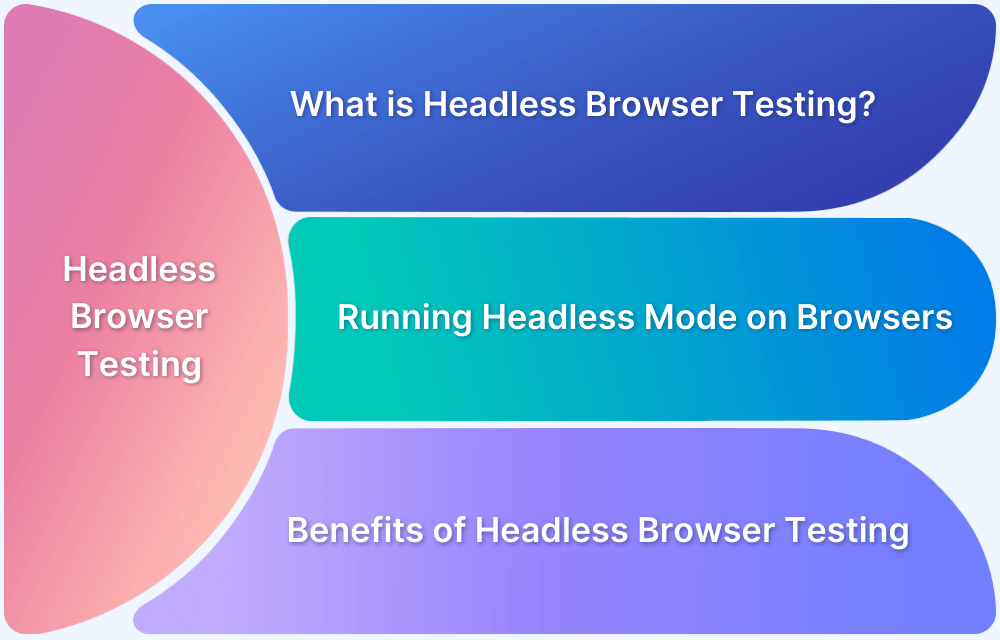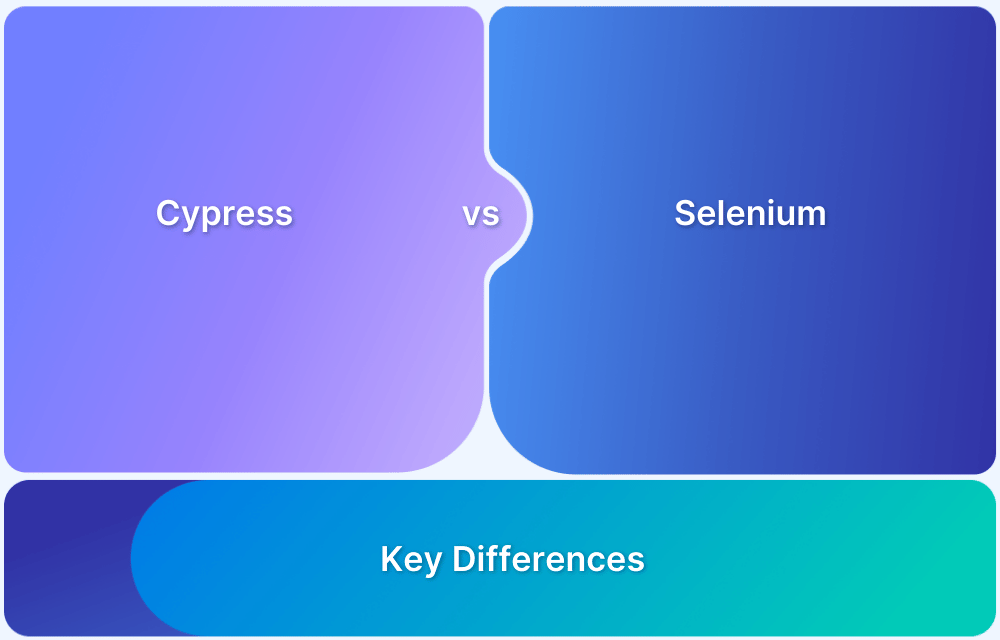Top 10 Advantages of Selenium for Web Application Testing
By Shweta Jain, Community Contributor - January 2, 2025
In software development, thoroughly testing web applications is a must. Selenium has become one of the go-to tools for automating this process, offering an open-source, flexible solution that works across multiple browsers and platforms. It’s popular among developers and testers because it’s easy to use and fits well into any testing workflow.
What makes Selenium even more powerful is its integration with tools like BrowserStack to perform cross-browser testing on real devices and environments without the hassle of managing physical machines.
This article explores the Top 10 Advantages of Selenium in web application testing, focusing on why it remains a top choice for both small teams and large organizations.
- What is Selenium?
- Why is Selenium Used?
- Top 10 Advantages of Selenium
- 1. Open-Source and Free to Use
- 2. Supports Multiple Programming Languages
- 3. Cross-Browser Compatibility
- 4. Multi-Platform Support
- 5. Comprehensive Testing Framework
- 6. Wide Range of Integration Options
- 7. Community Support and Resources
- 8. Scalability and Parallel Testing
- 9. Real-World Browser Testing
- 10. Flexibility in Test Case Design
- Why Choose BrowserStack to Run Selenium Tests?
What is Selenium?
Selenium is a free, open-source framework designed to automate the testing of web applications. It offers a versatile suite of tools that support various programming languages such as Java, Python, and JavaScript, making it highly accessible for developers and testers alike.
By simulating user actions within web browsers, Selenium allows users to create test scripts that verify the functionality of web applications, ensuring they perform as expected.
Selenium’s key components include:
- Selenium WebDriver: The main tool used for automating browser actions.
- Selenium IDE: A user-friendly interface that enables recording and executing tests.
- Selenium Grid: A tool designed to run tests across multiple machines and browsers at the same time.
Selenium has become a preferred choice for automating web application testing due to its cross-browser and cross-platform testing capabilities.
Read More: Cypress vs Selenium: Key Differences
Why is Selenium Used?
Selenium is widely used for automating functional testing of web applications, and its popularity among developers and quality assurance (QA) teams can be attributed to several compelling factors:
- Cross-Browser Support: Selenium is compatible with all leading browsers, including Chrome, Firefox, Safari, and Edge, enabling comprehensive testing across various platforms.
- Multi-Language Support: Selenium offers flexibility by supporting programming languages such as Java, Python, and JavaScript, allowing testers to write tests in the language they are most familiar with.
- Open-Source and Cost-Free: Selenium is free to use as an open-source tool, which makes it attractive to both small businesses and large enterprises.
- Seamless Integration: Selenium integrates effortlessly with other testing tools and platforms, such as BrowserStack, which enhances its capability to perform cross-browser testing on real devices and environments.
Given these benefits, Selenium has become a vital tool for teams aiming to streamline their web testing processes and ensure that their applications work properly across various browsers and devices.
Top 10 Advantages of Selenium
In the world of web application testing, Selenium stands out as a powerful and flexible tool that has become a go-to choice for developers and testers alike. Its extensive features and advantages make it a top contender for automating tests across various browsers, devices, and platforms.
Here are the top 10 Advantages of Selenium:
1. Open-Source and Free to Use
Selenium offers significant advantages as a powerful, free, and open-source tool for automating web application testing. Unlike many proprietary testing tools that require costly licenses, Selenium provides the same power and flexibility without the financial burden.
This makes it an ideal solution for both small startups and large enterprises alike. Additionally, as an open-source project, Selenium benefits from continuous improvements and contributions from its active community, ensuring access to the latest features and updates.
While Selenium is free to use, it can also be integrated with third-party services like BrowserStack for enhanced testing capabilities like parallel testing, debugging, and integration with CI/CD tools. BrowserStack allows you to perform cross-browser testing on 3500+ real device-OS-browser combinations on the cloud.
2. Supports Multiple Programming Languages
One of Selenium’s strongest advantages is its compatibility with a wide range of programming languages, including Java, Python, C#, Ruby, and JavaScript.
This flexibility allows developers and testers to write their automation scripts in the language they are most comfortable with, making the integration of Selenium into existing workflows smooth and efficient.
Moreover, Selenium’s compatibility with these languages means it can be used in a variety of development environments, further enhancing its versatility.
Read More: Headless Browser Testing with Selenium
3. Cross-Browser Compatibility
Selenium excels at cross-browser testing. It is compatible with all major web browsers, such as Chrome, Firefox, Safari, Edge, and Opera. This ensures that web applications are tested across different browsers, allowing you to confirm their functionality for a broad range of users.
Tools like BrowserStack provide access to real browsers on real devices in the cloud, enhancing cross-browser testing. This makes testing more comprehensive and efficient.
4. Multi-Platform Support
Selenium is compatible with a wide range of operating systems, including Windows, macOS, and Linux. This cross-platform support means that Selenium can be used in diverse environments, whether you’re running tests on local machines or servers.
Third-party services like BrowserStack provide additional benefits by allowing you to test your application on real devices and browsers hosted in the cloud. This allows you to test your web application across multiple operating systems, devices, and browser versions without worrying about maintaining your own hardware.
5. Comprehensive Testing Framework
Selenium WebDriver is an effective tool for automating functional and regression testing. It provides a strong testing framework that integrates easily with other test management tools and CI/CD pipelines, enabling seamless test automation throughout the software development lifecycle.
Read More: Exception Handling in Selenium WebDriver
6. Wide Range of Integration Options
Selenium can seamlessly integrate with a range of popular testing tools, including Jenkins, Maven, TestNG, and JUnit. This makes it easy to automate testing processes and incorporate them into existing development pipelines.
Selenium’s integration options extend to cloud-based services like BrowserStack, which can be useful for cross-browser testing.
7. Community Support and Resources
Selenium is supported by a large, active community that offers a wealth of resources, tutorials, forums, and plugins. Whether you are troubleshooting issues or looking for best practices, you’ll find plenty of community-driven support to guide you along the way.
The community for cloud testing services like BrowserStack is also robust. It’s important to note that this is supplementary to the vast resources available for Selenium itself.
8. Scalability and Parallel Testing
Selenium Grid allows you to scale your testing by running tests across multiple machines in parallel, saving time and improving efficiency. This is particularly useful for large-scale projects that need extensive browser and platform coverage.
Services like BrowserStack can help further scale testing by offering cloud-based cross-browser and real-device testing. However, Selenium Grid can also be used to scale tests locally or within your private infrastructure without reliance on external services.
Read More: Selenium Grid 4 Tutorial
9. Real-World Browser Testing
Selenium automates real user interactions with web applications, which is a major benefit when compared to some testing tools that use emulators or simulators. Testing in real browsers ensures that the tests are more accurate and reliable, reducing the chances of false positives.
Services like BrowserStack can provide even further accuracy by offering real-device testing. By integrating Selenium with BrowserStack, you can run tests on actual devices and real browsers hosted in the cloud. This eliminates the potential issues of relying on emulators, as you’re testing on real user conditions with various device configurations, OS versions, and browser types.
10. Flexibility in Test Case Design
Selenium is known for its flexibility in designing complex test cases. It allows testers to create dynamic locators, handle custom scripts, and precisely test edge cases. This flexibility ensures that Selenium can cater to a wide range of testing needs.
Why Choose BrowserStack to Run Selenium Tests?
BrowserStack Automate is a robust cloud-based platform that enhances the power of Selenium by enabling seamless testing on real devices and browsers. Here’s why integrating BrowserStack with Selenium can significantly improve your testing strategy:
- Real Device Testing: One of BrowserStack’s major advantages is its ability to test on real, physical devices rather than relying on emulators or simulators. This ensures that tests are more accurate, as they replicate real user environments, delivering more reliable results.
- Effortless Selenium Integration: BrowserStack integrates directly with your existing Selenium test scripts, meaning you can run them in the cloud with minimal setup. This allows your team to leverage Selenium’s full capabilities while scaling up your test coverage across multiple devices and browsers without changing your testing approach.
- Comprehensive Cross-Browser and Cross-Platform Testing: BrowserStack gives you access to a wide range of real browsers (Chrome, Firefox, Safari, Edge) and mobile devices (iOS, Android). Selenium’s ability to test across various platforms is enhanced by BrowserStack, which supports testing on both desktop and mobile operating systems, including Windows, macOS, and Linux.
- Parallel Test Execution: BrowserStack allows you to run tests in parallel, significantly speeding up the testing process. Instead of running tests sequentially on different devices and browsers, you can execute multiple tests at the same time, which saves valuable testing time and speeds up your release cycles.
- Scalable Testing Infrastructure: Maintaining your own testing infrastructure can be complex and costly. With BrowserStack, you get access to a scalable testing environment in the cloud. This lets you run tests on a wide range of devices without needing to worry about managing physical hardware or virtual machines. It’s a cost-effective solution for teams that need to test at scale.
- Advanced Debugging and Insights: BrowserStack provides detailed session logs, screenshots, and video recordings of each test session, which are essential for troubleshooting. These resources make it easier to track down issues and improve the accuracy of your tests, ensuring faster resolutions.
Integrating BrowserStack Automate with Selenium helps streamline your testing workflow, making it easier to run comprehensive, real-world tests at scale, and deliver high-quality applications in less time.
Conclusion
Selenium continues to be one of the most versatile and widely used tools for web application testing. With its open-source nature, multi-browser support, and integration with various testing frameworks, Selenium is a powerful choice for teams looking to automate their tests.
When combined with BrowserStack Automate, Selenium reaches new heights. BrowserStack allows you to run your Selenium tests on real devices and browsers, providing true-to-life test environments that ensure your application works as expected in real-world scenarios.
With features like parallel testing, scalability, and advanced debugging, BrowserStack complements Selenium and amplifies its capabilities, making it an ideal solution for modern web testing.
By using Selenium with BrowserStack Automate, you ensure faster test execution, more reliable results, and broader test coverage, all while maintaining the flexibility and power that Selenium provides.




